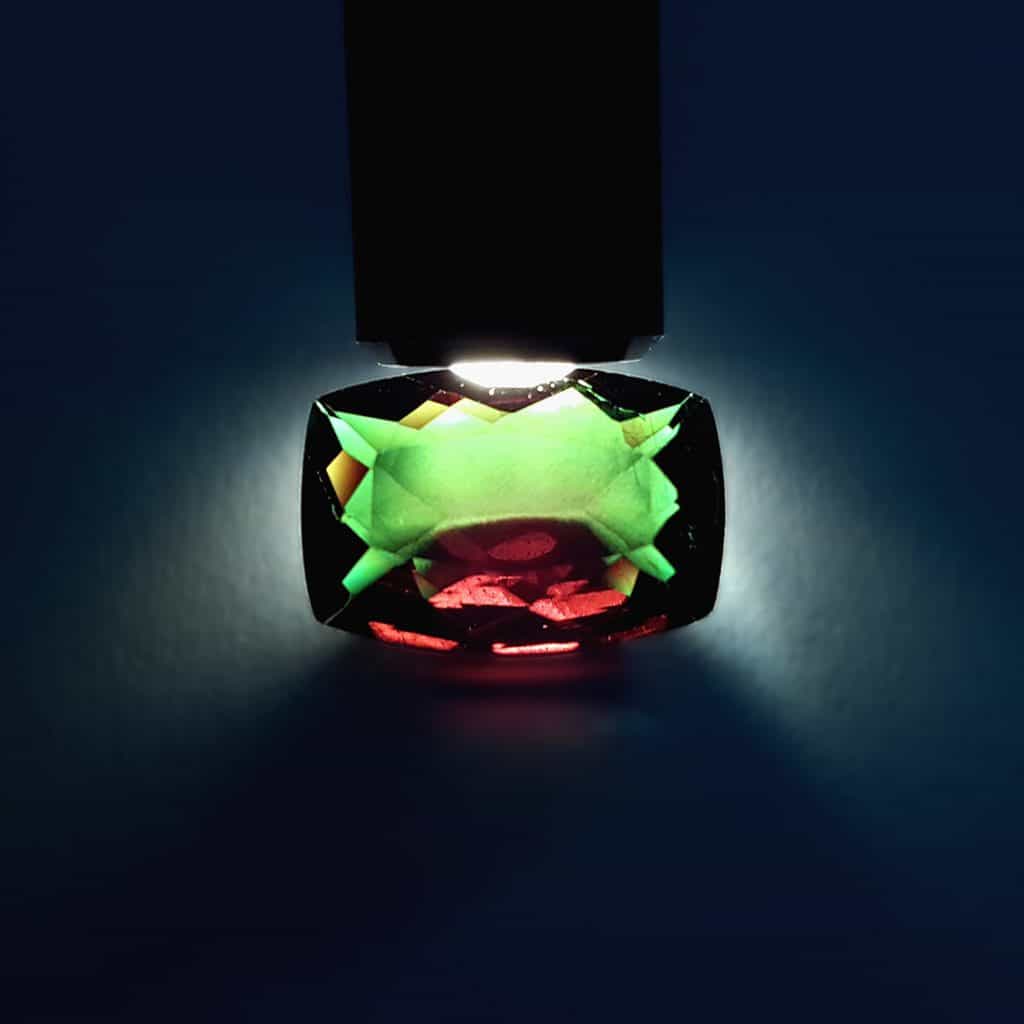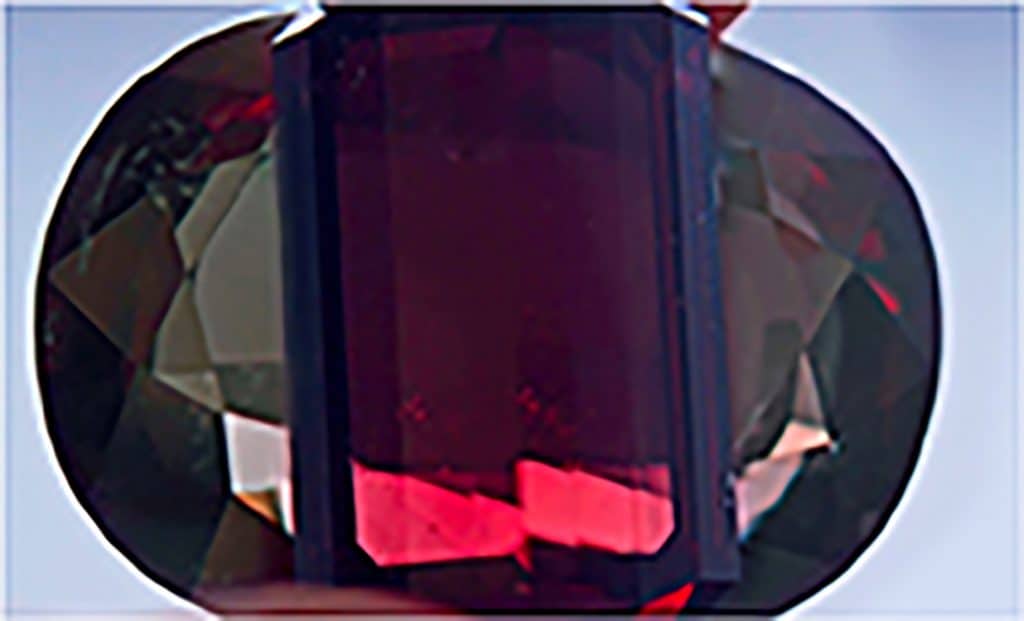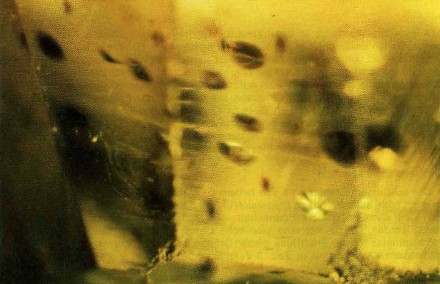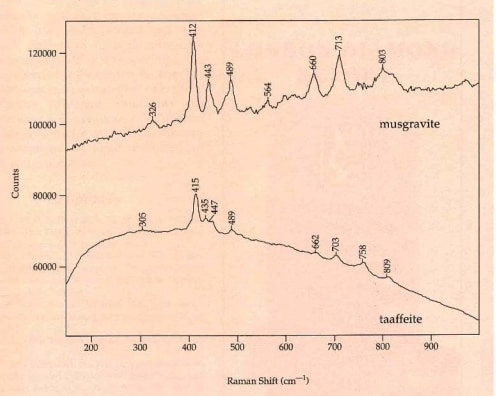
The Usambara Effect and other colour-change Effects in Gemstones
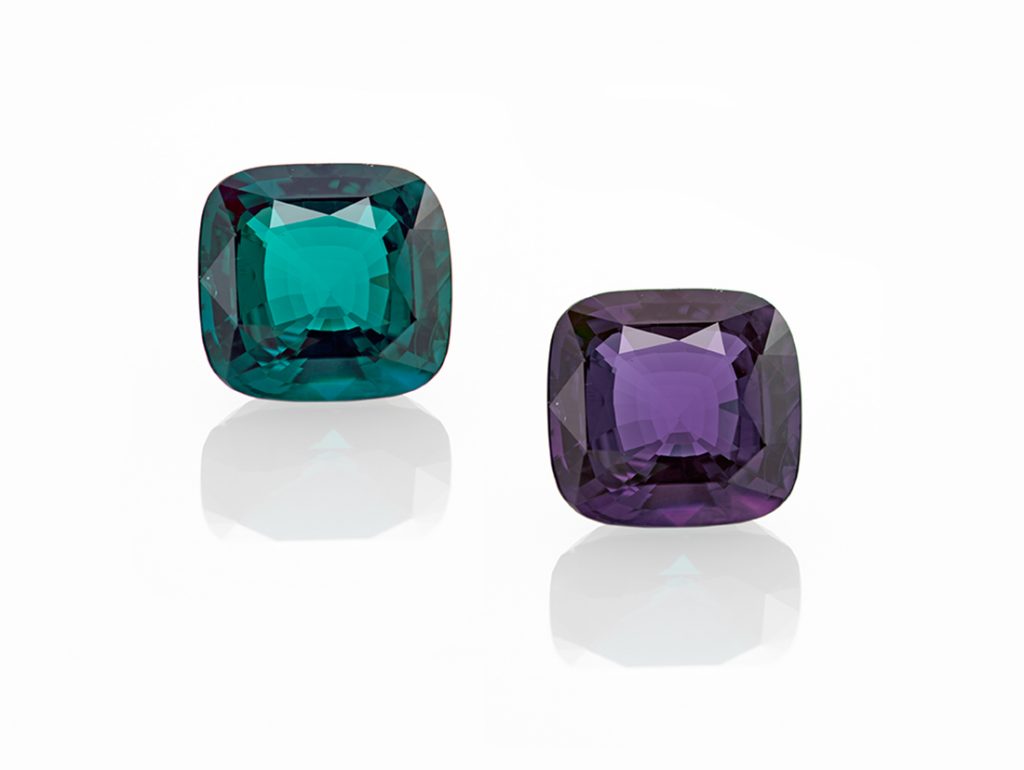
by A. W. Klumb, first published in Facette 25 (February 2019)
Colour change in gemstones is an interesting phenomenon, which can be due to a number of reasons. One of the causes is the so called Usambara effect, a type of colour change which is not so well known in the public. In contrast to the alexandrite effect, this phenomenon is not dependent on the type of illumination (different white light sources). It is named after the Usambara mountains in the Umba valley of Tanzania, a region that has been a rich source of colour change gemstones in recent decades.
“Colour change in minerals is complex and its understanding requires a holistic approach.” This quotation by Halvorsen (2006) shows that one has to understand all aspects that contribute to an observed colour change, whether it is the classic alexandrite effect or the Usambara effect, which in anisotropic minerals may both be modified by pleochroism, and as such also by the chosen crystallographic orientation for cutting.
Alexandrite effect
Since it was first described in 1831 for alexandrite (the chromium bearing variety of chrysoberyl) from Russia, colour change, also known as ‘alexandrite effect’ has been studied extensively by many scientists. When the main hue of a mineral in daylight differs from that seen in incandescent light we traditionally speak of colour change (LMHC 2010, Infosheet No. 9). Figure 1 shows an alexandrite exhibiting this kind of colour change.
The three main factors for observation of the ‘alexandrite effect’ in a gemstone/mineral are : a) two white light sources with distinctly different emission spectra (e.g. daylight vs. incandescent light), b) a material that shows two transmission windows in its absorption spectrum separated by an absorption band at approximately 570 nm (e.g. caused by chromium or vanadium) and c) an observer whose brain interprets the incoming residual light energies into an according colour sensation (White et al. 1967; Nassau, 1983). Minerals showing a colour change like the alexandrite effect are said to have dichromatic transmission spectra. This means that for light sources stronger in red wavelengths (incandescent light), the perceived colour is often shifted to purplish to reddish hues. In contrast, daylight is stronger in the blue to green part of the spectrum for which human eyes are more sensitive. Thus, the perceived colour is often dominated by bluish to green colours. However, other resulting colours may also occur (e.g. heated zircon, see Facette 20, 2013; or Fe-bearing cobalt spinel, Senoble 2010, Hanser 2013).
Apart from the alexandrite effect, there are other effects, which may considerably contribute to the colour perception of a mineral or gemstone, namely pleochroism (Liu et al., 1995) and the Usambara effect (Halvorsen and Jensen, 1997).
Pleochroism
The effect of different colours due to different selective absorption along two (uniaxial) or three (biaxial) vibrational directions within an anisotropic mineral (very distinct in alexandrite) is described as pleochroism. This property may also influence the perceived colours in anisotropic minerals. This happens by reducing the colour change especially in faceted alexandrite due to multiple internal reflections of the different plane polarized pleochroic colours (Liu et al., 1995).
Usambara effect
The Usambara effect describes the property of a material to change colour in relation to the path length that the light travels through the material. At the so-called critical thickness change-over point of the material (the critical path length through the gemstone), the perceived colour of the transmitted light shifts from (dark) green to (dark) red. This effect can be observed when viewing either along the ordinary or the extraordinary ray.
Most studies about this colour change effect were done on crystals and rough fragments, but also on some cut stones of chromium-bearing tourmalines and garnets from the Daluni area in the Umba Valley of northeastern Tanzania. The colour of gem materials exhibiting the Usambara effect can change due to internal reflections (Figure 2 and/ or 3) thus ‘doubling’ the perceived path length within the stone, or when two stones are superimposed (again resulting in a ‘doubling’ of the path length, Figure 4). Internal reflections are an effective increase in path
length and red flashes may appear on some facets only in an otherwise greenish gemstone, for example, Cr-bearing tourmaline or garnet. Until today, the Usambara effect was observed in many other gem materials such as corundum, garnet, epidote and kornerupine. All the above-described colour effects may contribute greatly to the beauty of a gemstone and are sought after curiosities of nature and highly appreciated by gem collectors, connoisseurs and gemmologists alike.
